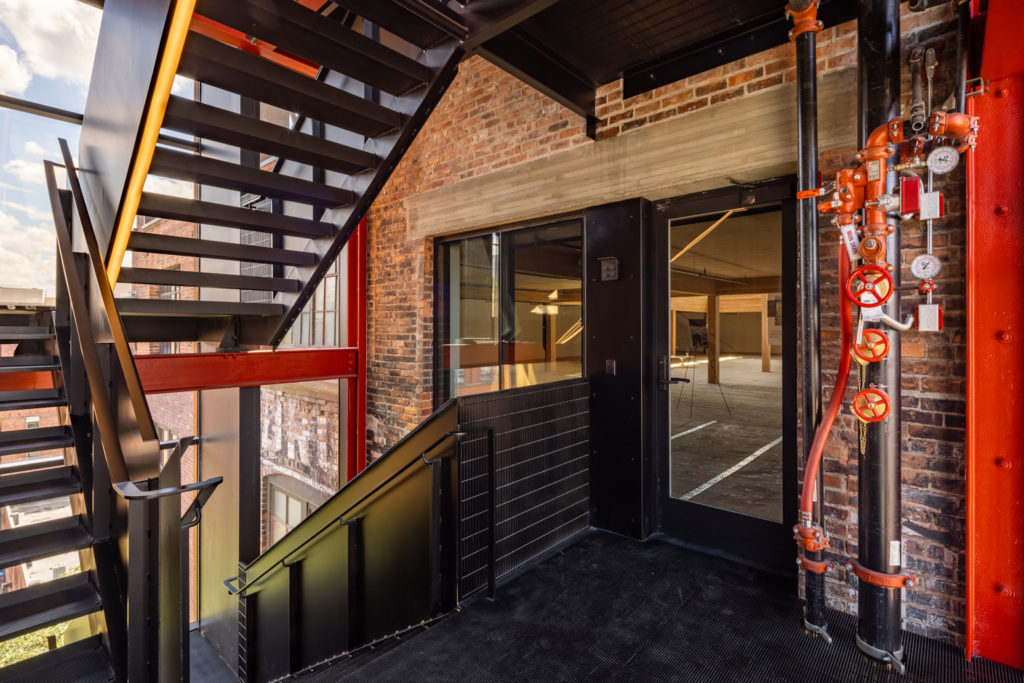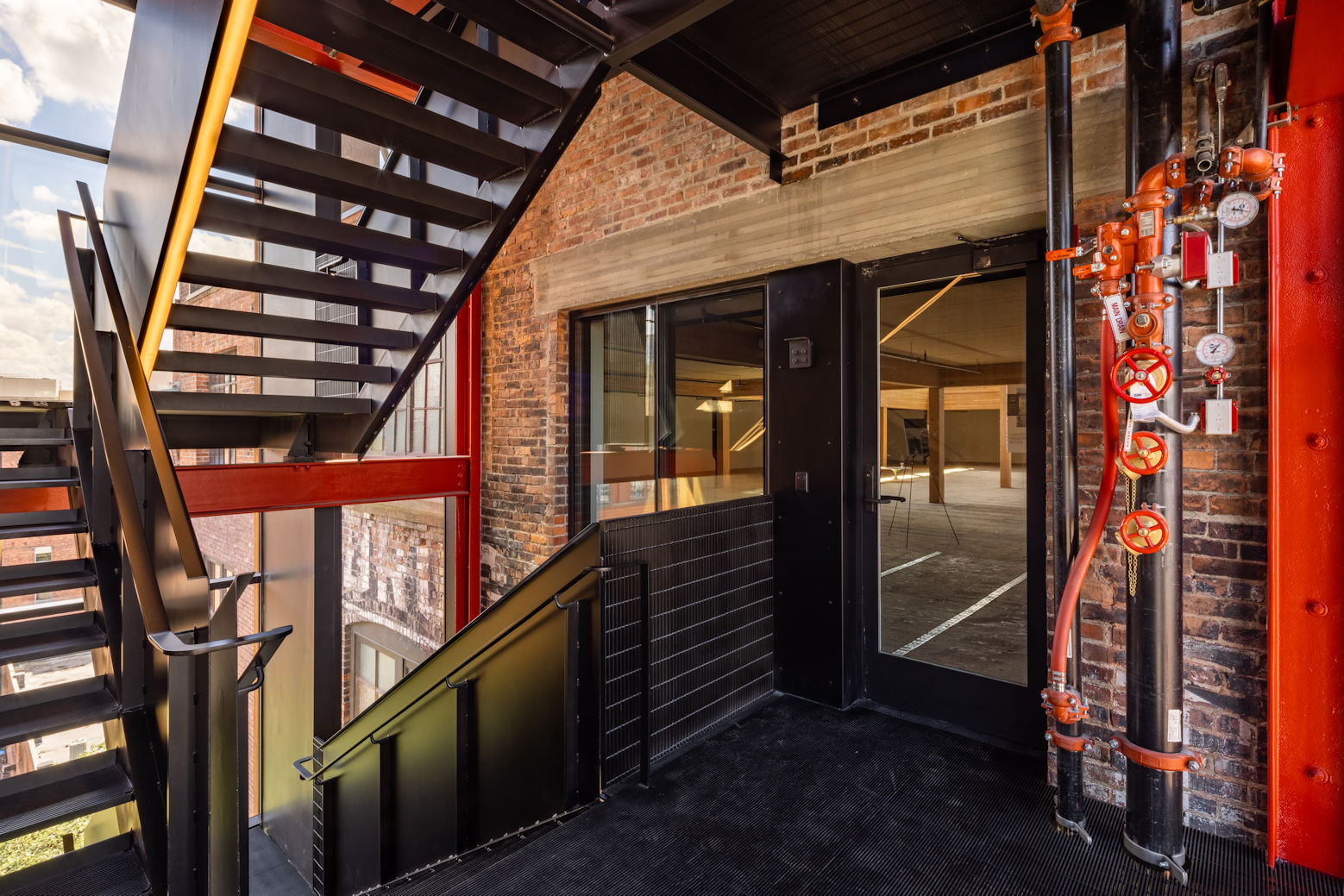This article was written by Tim Weller, Allegion’s Manager of Codes, Standards, and Sustainability, and was published in Door Security + Safety
.

 Over the past couple of decades, sustainable design has expanded from a loosely defined idea to a concept accepted throughout the architecture industry and regulated by several green building organizations. One of the first, and arguably most prominent, programs is LEED. There’s also The 2030 Challenge, which hopes to make all new buildings carbon-neutral by 2030.
Over the past couple of decades, sustainable design has expanded from a loosely defined idea to a concept accepted throughout the architecture industry and regulated by several green building organizations. One of the first, and arguably most prominent, programs is LEED. There’s also The 2030 Challenge, which hopes to make all new buildings carbon-neutral by 2030.
One of the more recent initiatives, the Living Building Challenge, describes itself as providing “a framework for design, construction and the symbiotic relationship between people, our community, and nature” to help projects become “truly regenerative.” The program uses a seven-petaled flower metaphor to measure building performance. Projects need to satisfy at least three of these Petals for partial certification and all of them to become a Certified Living Building.
Given that less than 20 buildings worldwide have achieved full program certification since 2006, this may be one of the most stringent programs in the industry. As such, designers with projects aiming for full or partial Living Building Challenge certification will need to examine every piece of the building to reach their sustainability goals.
This includes doors and framing systems. As repeated architectural features, they can substantially affect a building’s rating. But doors and framing assemblies have an extra challenge: not only must they meet the rigorous demands of the Living Building Challenge, but they may also need to comply with critical fire- and life-safety code requirements. If these standards are neglected, not only will a building not pass inspection but the occupants could be at risk for unnecessary harm. However, safety and sustainability don’t have to be at odds with one another, especially when there are systems available that satisfy both goals simultaneously.
When door distributors understand what green building designations require, how they monitor specific building features and which products contribute to these initiatives, they can not only strategize to keep stock that meets the growing demand for sustainable architecture but also offer options to meet a firm’s design preferences. This not only contributes to a healthier tomorrow but can drive increased sales.
What are Declare Labels?
One of the seven Petals for the Living Building Challenge focuses on materials, specifically eliminating materials that have adverse environmental, health and social impacts. To codify this, the International Living Future Institute, the founding organization of the Living Building Challenge program, created Declare Labels.
Declare Labels disclose specific material content and ensure the building product complies with Living Building Challenge criteria, proving a product contributes to specific sustainability benchmarks. Manufacturers and suppliers must disclose all ingredients in their products to ensure none of the over 900 “Red List” chemicals are used. They must also disclose sourcing information as well as lifecycle information. In these ways, Declare Labels reveal how a product will affect the environment from the moment it is created to the end of its service life, allowing specifiers to make the most informed decisions about which products will meet green building standards.
Since their launch, these labels have positively changed the materials marketplace by improving both the visibility of ingredients and the exchange of information between manufacturers, distributors and design professionals to enable a future of healthier buildings. Declare Labels can provide useful information for programs other than the Living Building Challenge. As a public disclosure with a level of transparency that surpasses any other material label, they can be a part of any accurate assessment of a project’s impact on the planet.
What do these labels mean for door distributors?
While Declare Labels are often used to ensure a project will fit the stringent requirements of the Living Building Challenge, the amount of information they disclose can be useful for distributors, particularly for difficult to specify elements like doors. Doors not only have intricate design and installation requirements, but, depending on the application, they may also need to meet accessibility standards and comply with fire- and life-safety codes.
Finding doors that fulfill each of those requirements while also contributing to a sustainable building can be challenging for those who don’t work with them all the time, so being familiar with these labels—what information they disclose and which manufacturers have adopted them—can help distributors better meet demand for sustainability-focused projects.
When helping design professionals achieve certification, distributors who know which manufacturers and products have Declare Labels and what their labels disclose can help architects specify the right systems for their project as well as find comparable alternatives. For extremely specialized systems, like fire-rated full-lite glass doors, there may only be a few full-system options that meet Declare Label criteria. Because these options simplify the specification process by ensuring products meet sustainability goals, are compatible and satisfy critical fire- and life-safety requirements, distributors that stock these systems can maximize their investments while also contributing to ecofriendly construction.
Further, while architects may be able to build sustainable and fire-rated systems from individual components, the process is difficult and may lead to product failure or incompatibilities. When distributors offer multiple fire-rated, full systems with Declare Labels, they can more readily satisfy a firm’s design preferences in a way that meets fire and life-safety requirements, bolstering their channel’s reputability and helping architects satisfy the Living Building Challenge’s Materials Petal.
Opening the doors to Health & Happiness
In addition to Declare Labels, the Living Building Challenge has two other Petals that can be tied directly to egress systems: Health & Happiness and Beauty. The Health & Happiness Petal focuses on improving the source of several health problems, both physical and psychological, to increase the quality of life and comfort that occupants can experience within a building. Projects can utilize full-lite doors and other glazing assemblies to create biophilic designs, increase daylighting and enhance a space’s level of visual comfort.
Fire-rated, full-lite glass doors can increase access to daylight and connection to the natural world that surrounds a building, especially when specified in tandem with other systems that use large lites of glass. Whether glazed with transparent or translucent glass, these assemblies can help draw an adequate amount of light into a building while also meeting building code requirements for fire and life safety. Additionally, when these systems are combined with narrow profile frames, they not only maximize the glazing area but also offer a close visual match to non-fire-rated systems. This helps deemphasize the presence of fire- and life-safety rated products, contributing to a safe and welcoming atmosphere.
Likewise, these systems can grant stunning views of outdoor gardens, natural landscapes and wildlife to those within the building. In doing so, fire-rated full-lite glass doors can help occupants feel connected to the natural world while still providing necessary safety. Studies have shown that providing this connection has multiple benefits, from reminding people of their ability to positively impact the planet to improving their ability to concentrate. Making the natural world visible from within a building can also reduce stress and help prevent burnout—both of which support occupant wellbeing.
In addition to the Living Building Challenge, systems that contribute to occupant wellbeing have gained ground in the construction industry. Distributors that can point to specific ways products contribute to occupant health and happiness can meet the demand of these growing initiatives by helping architects design more comfortable and sustainable projects.
Elevating designs without sacrificing occupant safety
The other Petal that relates to doors and framing assemblies is Beauty. This Petal encourages design teams to put thoughtful effort into the look and feel of a building. It stresses that building designs should inspire and elevate the lives of the occupants, visitors and neighbors. Fire-rated full-lite glass doors can help create remarkably open and collaborative environments while establishing a fire and smoke barrier in the event of a fire. Using their ability to meet safety standards and design goals, these systems can elevate an interior space by fostering a sense of connection between the people within the building.
This feeling of connection can serve to inspire, encouraging occupants to collaborate and push the boundaries of what each of them could accomplish on their own. Additionally, systems with slender profile frames can contribute to a cohesive design aesthetic between rated and non-fire-rated systems, which often have narrower profiles than traditional fire-rated frames. Creating an almost seamless visual transition between systems, fire-rated, full-lite glass doors with narrow profiles can improve the overall look and feel of a building’s interior.
Not only do these types of doors and framing help architects design stunning projects, but they also can contribute to a project being certified by the Living Building Challenge. As such, distributors that carry them can drive more and higher sales as the demand for inspiring building design increases.
How does knowing about the Living Building Challenge benefit distributors?
Although most green building initiatives center on the responsibilities of designers and specifiers, knowing which products and manufacturers align with sustainable construction standards can also increase the value distributors offer.
Distributors who invest in door and framing systems that contribute to multiple Petals in the Living Building Challenge can meet the rising demand for sustainable and occupant-centered architectural products. This includes knowing which systems have Declare Labels and how they can contribute to other Petals. Full-lite, fire-rated glass doors that have Declare Labels can help architects meet the criteria for the Materials Petal. They can also be a part of a design that is inspiring and focuses on improving occupant health and happiness. When distributors stock these products, they can help architects create a more environmentally conscious future without sacrificing their design preferences.
Further, if there is an unstated message behind the Living Building Challenge and, more generally, the proliferation of green building initiatives, it’s that everyone in the building industry can help make buildings more ecofriendly—distributors included. Understanding the benefits of Declare Label products and systems that contribute to sustainable construction and occupant health and happiness can help distributors inform design professionals and contractors, creating a positive ripple effect throughout the entire building industry.
Tim Weller AHC/CDC, FDAI is an experienced Product Sustainability Manager at Allegion and Technical Glass Products. He has a demonstrated history of working in a variety of roles within the architectural hardware industry.
You need to login or register to bookmark/favorite this content.






Leave A Comment